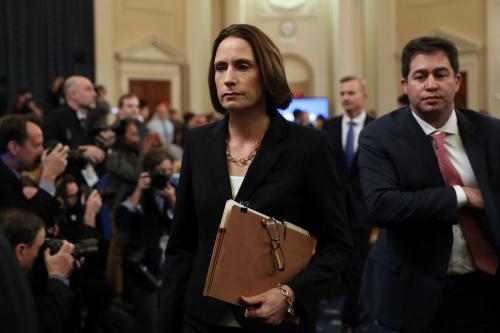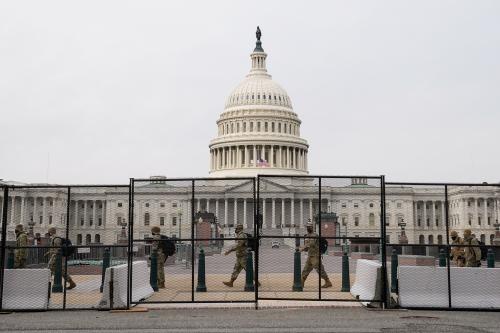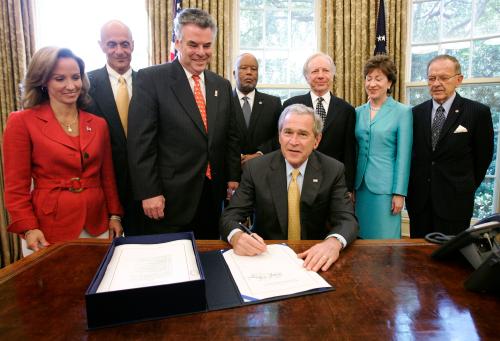President Bush has made a mistake by threatening to veto additional congressional spending bills on homeland security.
Although some proposed appropriations may be wasteful, there still are many unmet needs for protecting American citizens and territory. A prominent case in point is the role of the U.S. Coast Guard.
The Coast Guard is the country’s principal defense against illicit shipping. Working in tandem with Customs and the Immigration and Naturalization Service, it would be critical for preventing terrorists from bringing explosives or weapons of mass destruction onto American soil.
Of course, it also carries out well-known efforts to rescue boaters, protect fisheries, ensure environmental protection in America’s exclusive economic zones and prevent drug smuggling. These missions all remain important even in the post-Sept. 11 world.
The Coast Guard does these things with 35,000 active-duty personnel and about $5 billion a year (most of it from the Transportation Department budget). That means it’s one-sixth of its size during World War II, one-fifth the size of the current Marine Corps, one-fortieth the size of the U.S. armed forces overall and about one-sixtieth as expensive as the Defense Department. Despite this meager resource base, it has only received about $300 million to date in supplemental funding for the national response to terrorism.
The Coast Guard budget was too small even before Sept. 11. Many of its ships face obsolescence. Equipment breakdowns and old vessels that are slower than those often operated by outlaws are affecting the Coast Guard’s abilities to carry out its duties. Unfortunately, projected budgets will only allow replacement of its larger ships and aircraft over the next 50 years. That plan must be accelerated.
In addition to these pre-existing needs, the Coast Guard fleet is simply too small for the additional tasks now being assigned it. Before Sept. 11, perhaps 10 percent of the Coast Guard fleet routinely provided port and waterway security. Since then, about two-thirds of deployed Coast Guard assets have been devoted to such measures. Moreover, these assets are being used at a higher than normal pace.
By early October, 72 security zones had been established around facilities such as major naval bases, key landmarks like the Statue of Liberty and oil refineries near major cities. All vessels in New York Harbor were inspected; other prominent ports and cities such as New Orleans were heavily guarded; waters near certain nuclear power plants were patrolled; cruise ships were boarded and searched. Port and waterway security missions alone have been requiring nearly the equivalent of a full Coast Guard fleet operating at normal tempo.
The Coast Guard has been able to maintain this increased tempo only by drastically curtailing other missions and working its personnel extremely hard. That is at best a temporary fix. Over the longer term, there is only one acceptable solution—a much larger Coast Guard.
How much larger? The Coast Guard commandant, Adm. James M. Loy, has said it will not be necessary to sustain the current pace of operations forever. Improved screening procedures for ships headed toward U.S. waters eventually should allow more efficient use of assets to protect key waterways and facilities and less application of simple brute force.
Today’s Coast Guard includes roughly 90 large cutters, about 90 special-purpose vessels including icebreakers and buoy tenders, just over 300 small ships and boats and roughly 200 aircraft. The nation probably does not need major increases in the first two categories. But small ships and aircraft may have to increase as much as 50 to 100 percent, and new technologies will be needed as well.
The annual Coast Guard budget should probably total in the range of $7 to $7.5 billion a year—at least a $2 billion increase, in contrast to the $300 million emergency supplemental.
President Bush is right that we still need fiscal restraint. But to spend $8 billion this year on missile defense, many billions on airport security, $1 billion a month in the war in Afghanistan and only another $300 million for the Coast Guard is to close certain vulnerabilities in American society while leaving others glaringly open.



Commentary
Op-edTired Coast Guard Needs Budget Boost
November 19, 2001